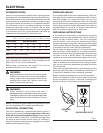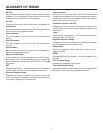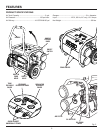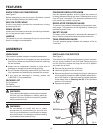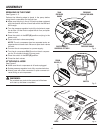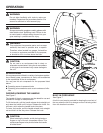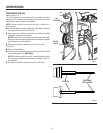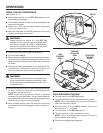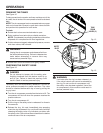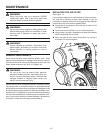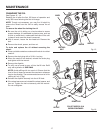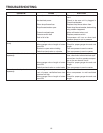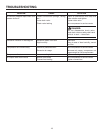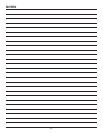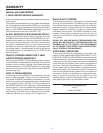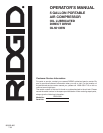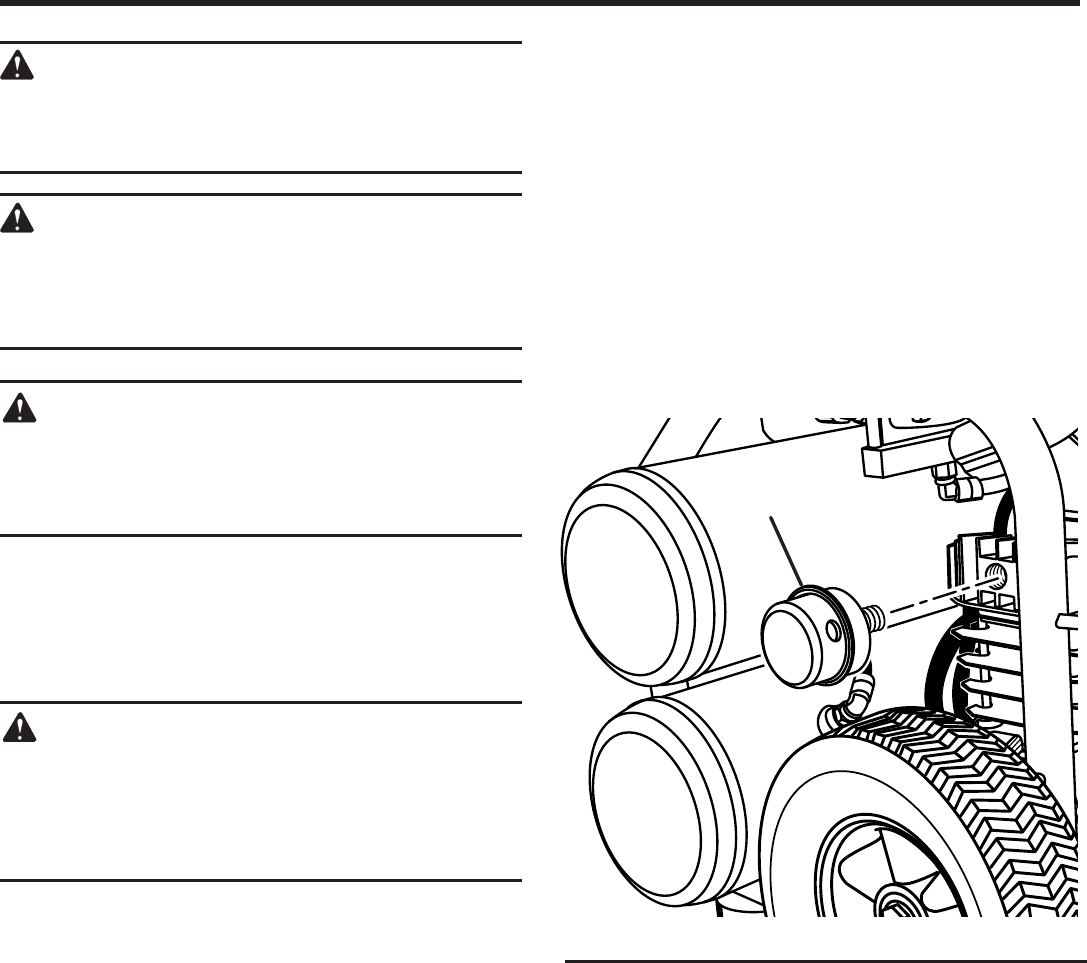
16
17
MAINTENANCE
WARNING:
When servicing use only identical RIDGID
replacement parts. Use of any other parts may
create a hazard or cause product damage.
WARNING:
Always wear safety goggles or safety glasses with
side shields during power tool operation or when
blowing dust. If operation is dusty, also wear a
dust mask.
WARNING:
Always release all pressure, disconnect from
power supply, and allow unit to cool to the touch
before cleaning or making repairs on the air
compressor.
GENERAL MAINTENANCE
Avoid using solvents when cleaning plastic parts. Most
plastics are susceptible to damage from various types of
commercial solvents and may be damaged by their use. Use
clean cloths to remove dirt, dust, oil, grease, etc.
WARNING:
Do not at any time let brake fluids, gasoline,
petroleum-based products, penetrating oils, etc.,
come in contact with plastic parts. Chemicals can
damage, weaken or destroy plastic which may
result in serious personal injury.
Electric tools used on fiberglass material, wallboard, spack-
ling compounds, or plaster are subject to accelerated wear
and possible premature failure because the fiberglass chips
and grindings are highly abrasive to bearings, brushes, com-
mutators, etc. Consequently, we do not recommended using
this tool for extended work on these types of materials. How-
ever, if you do work with any of these materials, it is extremely
important to clean the tool using compressed air.
REPLACING THE AIR FILTER
See Figure 14.
If you notice a reduction in performance of the air compres-
sor, and the air delivery is lower than desired, it may be
necessary to replace the air filter. A clogged air filter reduces
performance and can cause increased wear.
n Unplug the air compressor. Allow the unit to cool for five
minutes if needed.
n To remove the old air filter, turn it counterclockwise.
n Using a clean, dry cloth, wipe away any loose dirt or debris
before reinstalling the new filter.
n Insert the new air filter and hand-tighten by turning it
clockwise. Do not overtighten.
Fig. 14
AIR
FILTER



